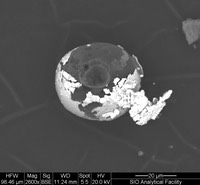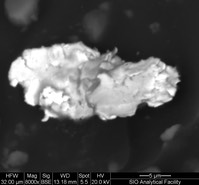In our research, we also introduced a new model of the atom that predicted that atomic transformation (transmutation) could be carried out under low energy conditions akin to chemical catalysis. We have proposed that atoms are complex electromagnetic waveforms that are circulators of the space lattice, the carrier medium for electromagnetic interactions.
We have also observed that electromagnetic energy is truly the most basic form of energy, and that electromagnetic pressure waves of sufficient intensity should be capable of inducing atomic transformation. In addition, the atom itself should be viewed as a whole, irrespective of whether chemical or nuclear reactions are concerned. For this reason, we have introduced the term low-energy atomic transformation to replace the currently used term “nuclear reaction” to describe the synthesis of elements under conditions akin to chemical catalysis.
We have provided proof of this model, using liquid and solid state catalysis in a two-step process. We found that the high ionic/electric activity of a concentrated base solution in combination with heating is sufficient to induce atomic transformation and generate a new product high in sodium, aluminum and silicon. When further heated at 10000C, this product yields numerous elements of higher atomic masses. Thus, the process of atomic transformation can be demonstrated today (see images) using common chemicals and simple laboratory procedures. Examples for the synthesis of silver and gold were described.
Natural Synthesis?
These results have confirmed our hypothesis that atomic transformation requires electric pressure along with heating. This may in fact be Nature’s essential method of synthesizing matter.
Atomic Equilibrium
If atomic bodies are generated by external electromagnetic pressure waves, the atom cannot have an energy of its own capable of attracting from the inside, e.g., from a solid nucleus. Instead, the atom may be viewed as a wound-up spring that seeks equilibrium with its low-pressure environment--and will do so unless maintained by a continuous input of energy. The physical nature of such an energy source remains to be determined.
Future Applications
Our studies have opened up the intriguing possibilities of low-energy controlled synthesis of elements, and suggest that our theoretical framework of atomic processes have great potential for further development.
Future studies in this field could help resolve a number of practical, seeming insoluble environmental problems such as the accumulation of radioactive waste and toxic pollution caused by mining operations. Bold new theoretical considerations of the atom may well propel today’s physical and material sciences into a new era of unimaginable possibilities.




